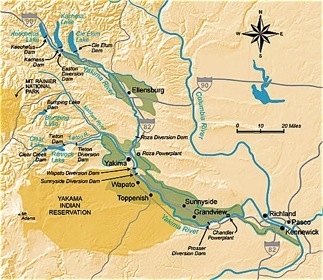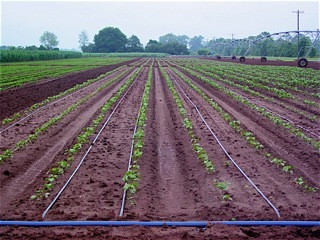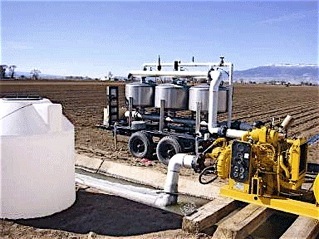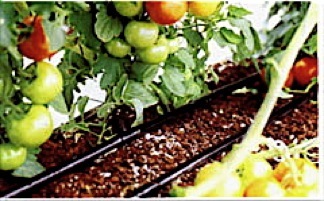Yakima Water Solutions

Water Conservation
There are tremendous opportunities for water conservation in the Yakima basin. Three recent studies have analyzed that potential and the conclusions indicated that a substantial portion of the projected demand for supplemental water supply in the Yakima River basin could be met through water conservation, at a cost much lower than that of the Black Rock project.
In 1994, Congress enacted the Yakima River Basin Water Enhancement Project (YRBWEP) to address water supply problems in the basin. YRBWEP’s Basin Conservation Program funded the development of water conservation plans for most of the irrigation districts in the basin.
In 2002, the Yakima County Water Resources Agency issued an analysis of the YRBWEP conservation plans. The study estimates that 14 irrigation districts in the basin could save up to 540,000 acre-feet of water at a cost of about $400 million. Another 95,000 to 178,000 acre-feet could be saved through on-farm efficiency programs.
[For additional information: Water Use Efficiency in the Agricultural Sector, Tables 5-2, 5-3 and 6-1 (Montgomery Water Group, February 2002)]
In its Black Rock analysis, the Bureau of Reclamation evaluated only six of the irrigation district conservation plans, and came up with a figure of 104,000 acre-feet of water saved at a cost of $126 million. These quantities could be used both to augment instream flows and for irrigation.
[For additional information: U.S. Bureau of Reclamation’s Storage Study Team Technical Information and Hydrologic Analysis for Plan Formulation, Table 2-1 (November 2006)]
Most recently, the Department of Ecology conducted a survey of water conservation projects in eastern Washington. The newly released Water Supply Inventory offers some interesting findings, including that future demand for new irrigated agricultural lands is flat, and that potential water savings from conservation projects could satisfy existing and future demand for water.
[For additional information: Water Supply Inventory (Dep’t of Ecology, Nov. 2006)
Unfortunately, to date most of the Yakima water conservation projects remain under-funded and largely unimplemented. It appears that a substantial portion of the projected demand for water in the Yakima River basin could be met through water conservation, at a cost much lower than the Black Rock project.
Yakima River Basin Alternatives
The Yakima River is an important river in Washington, for many reasons. Salmon habitat, agricultural water supply and recreation, are all legitimate uses of the Yakima mainstem and its tributaries.
Dr. Ken Hammond, professor emeritus and former chair of the Geography Department at Central Washington University, has studied and written on Yakima basin water issues for decades. Dr. Hammond concludes that, given the cost, it would be vastly more economical to engage in alternative strategies to control water demand than to build more storage projects.
Water demand management includes a suite of activities, most of which could be accomplished at a fraction of the cost of building the Black Rock project. Demand management strategies include:
outilizing water markets to allow transfer of existing rights
opricing water to ensure it is put to best use
opermanent or seasonal fallow of agricultural lands
owater conservation projects including pressurized pipelines, imposition of efficiency requirements and several other options.
Some of these activities are in partial use in the Yakima basin, but there is no coordinated effort to maximize water demand strategies to meet supplemental water requirements. Until every such effort is made, it is not clear why or how state and federal agencies can justify spending millions of taxpayer dollars to study Black Rock, one of the largest water follies yet to be proposed in Washington’s history.
[For additional information: See Professor Ken Hammond’s problem definition and discussion of alternatives to storage in the Yakima River basin, American Water Resources Association, September 29, 2005.
Home

Columbia Institute for Water Policy
Black Rock Follies © 2007

Yakima River Basin. A 2002 study estimates that 14 irrigation districts in the basin could save up to 540,000 acre-feet of water at a cost of about $400 million. Another 95,000 to 178,000 acre-feet could be saved through on-farm efficiency programs. Most of the Yakima water conservation projects remain under-funded and largely unimplemented. Click here to enlarge (map source: U.S. Bureau of Reclamation)


Irrigation pump system. photo: Colorado Conservation District
Surface drip irrigation. photo: USDA
Drip irrigated grapes. photo: UAH website
Drip irrigated tomatoes.
photo: Yasshen Group website
















